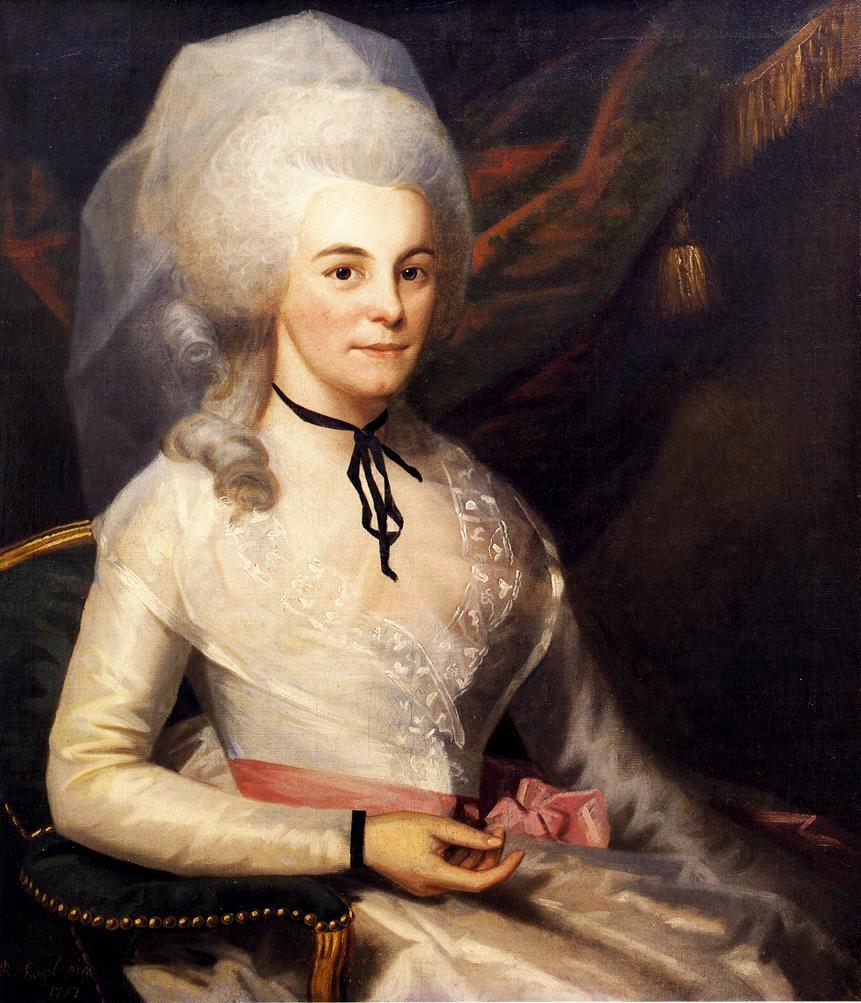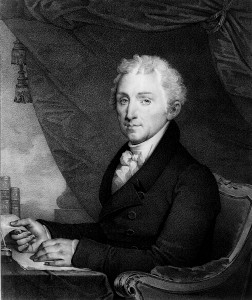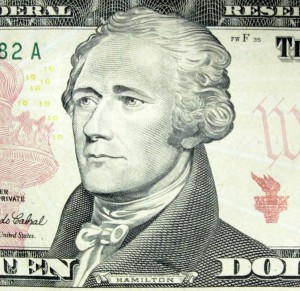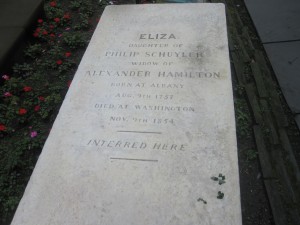Eliza Hamilton, widow of Alexander Hamilton, had come to visit her daughter in D.C. She was chilling in the back yard with her teenaged nephew when a maid brought James Monroe’s card. (I am guessing this maid was an employee, as the Hamiltons were strongly anti-slavery.)
This was in the 1820s. Eliza Hamilton, in her 70s, had been a widow since 1804, when her husband was killed in the famous duel with Aaron Burr. She had been working hard to preserve her husband’s legacy and memory. Monroe had just finished his second term as president.
How gracious of the ex-president to call! But that’s not how Hamilton saw it.

Eliza, around 1787, painted by Ralph Earl, when Earl was in the NYC jail for nonpayment of debts. The Hamiltons were helping Earl out with this gig. Looks to me like a gigglefest. (Maybe they sat around telling John Adams jokes.)
When she saw Monroe’s name she was “much perturbed,” according to the nephew. “What has that man come to see me for?” Nephew said “that man” had probably come to pay his respects. She thought about it and went in to the parlor where Monroe was waiting.
Wait, why was Monroe “that man” to Eliza Hamilton? It’s complicated. Back in the early 1790s, Alexander Hamilton had had a stunningly stupid affair with Maria Reynolds. Maria and her husband James Reynolds ran the badger game on Hamilton for around 3 years, extracting large sums of money from him.

James Monroe, painted by Gilbert Stuart. Pondering which sounds better, “water under the bridge” or “water over the dam.” I know! How about “Let’s say no more about it”?!
After James Reynolds was arrested for criminal speculation, he tried to get out of it saying Hamilton had been involved too. (The crime involved speculating on unpaid wages owed to veterans of the American Revolution.) Reynolds’s accusation was brought to James Monroe and Frederick Muhlenberg, who confronted Hamilton.
Hamilton, horrified at the accusation of political/financial misbehavior, told Monroe and Muhlenberg everything about his connection with the Reynolds couple. Everything. He gave them letters from Maria.
Monroe and Muhlerberg, now convinced that Hamilton had had nothing to do with the speculation, agreed to keep the part about the affair a secret. Hamilton broke off the affair.
Despite the promise of secrecy, Monroe passed Hamilton’s love letters to a close friend of his, who happened to be a political enemy of Hamilton’s, a wily fellow called Thomas Jefferson.
Jefferson started rumors about Hamilton’s sexual misbehavior. (While managing to keep rumors about his own sexual misbehavior far quieter.) In 1797 a series of pamphlets were published, attacking Hamilton, accusing him of speculating, and reprinting parts of the correspondence with Maria Reynolds.

For all his achievements (Revolution, Constitutional Conventions, national bank, Coast Guard, etc.), perhaps his real dream was to appear in a Broadway show.
It was obvious that the secret hadn’t been kept as promised. Third parties barely managed to keep Hamilton and Monroe from fighting a duel. (Monroe denied leaking the letters; Hamilton called Monroe a liar; Monroe called Hamilton a scoundrel and challenged him; somehow Aaron Burr, yes Aaron Burr, talked them out of it.) Hamilton put out his own 95-page pamphlet, denying the financial speculation, but admitting the affair with Maria Reynolds. For which he apologized.
This whole thing was very bad for Hamilton’s public reputation. And while we know no details, it must have been very unpleasant for Eliza Hamilton.
Backstory over. Phew. With this in mind, Eliza Hamilton went into the parlor to face Monroe. Politely, Monroe stood. Rudely, Hamilton did not urge him to sit right back down and have some iced tea. Monroe bowed. He said something to the effect that it had been a long time since they’d met, “that the lapse of time brought its softening influences, that they both were nearing the grave, when past differences could be forgiven and forgotten.” You know, let bygones be bygones.
As Ron Chernow puts it in his biography, Alexander Hamilton, “Eliza saw that Monroe was trying to draw a moral equation between them and apportion blame equally for the long rupture in their relationship.” She wasn’t having it.
“Mr. Monroe, if you have come to tell me that you repent, that you are sorry, very sorry, for the misrepresentations and the slanders and the stories you circulated against my dear husband, if you have come to say this, I understand it. But otherwise, no lapse of time, no nearness to the grave, makes any difference.”
Apparently that was not what James Monroe had come to say. He picked up his hat, wished her a good day, and left.
That would have been a good apology, if Monroe had made it. Eliza Hamilton would have had to accept it. But he gave up when he saw that the “no hard feelings, who hasn’t made mistakes?” approach wasn’t going to fly.
Speaking of nearness to the grave, Monroe hung on until 1831. He could have gone back and tried again, since Eliza Hamilton lived into her 90s and was available to grovel before until 1854. But no.


I know this is SorryWatch, and I am supposed to cheer for actual good apologies, but I am fast becoming Girl Grimly Amused By Those Who Do Not Accept Stupid Apologies. That may not have been your intention, but nevertheless: LOL.